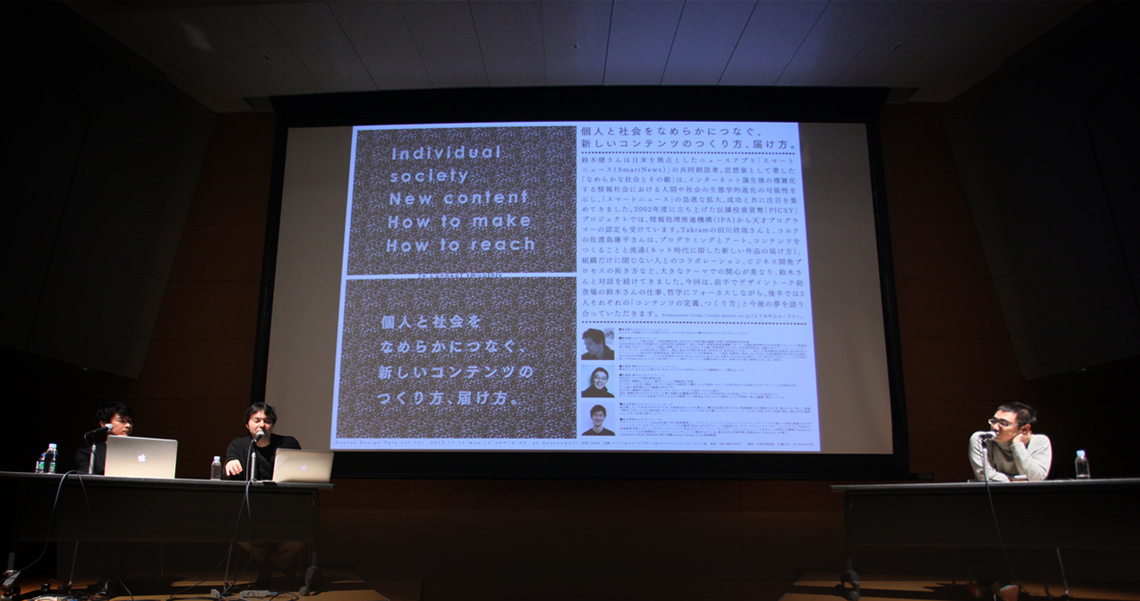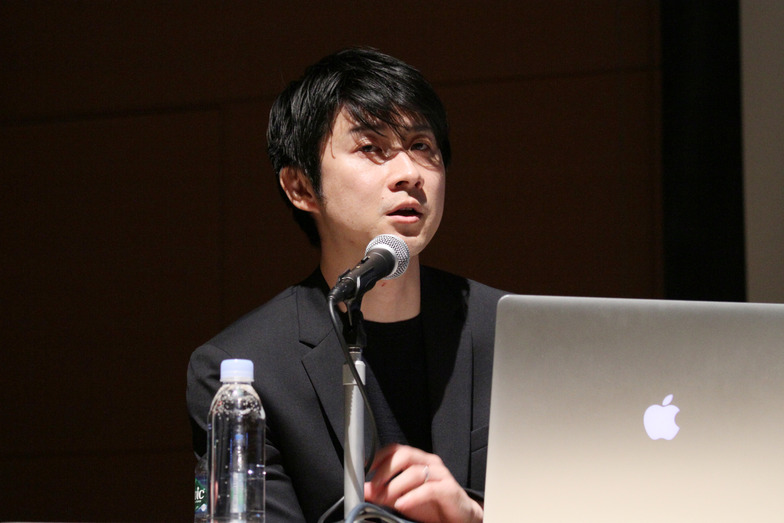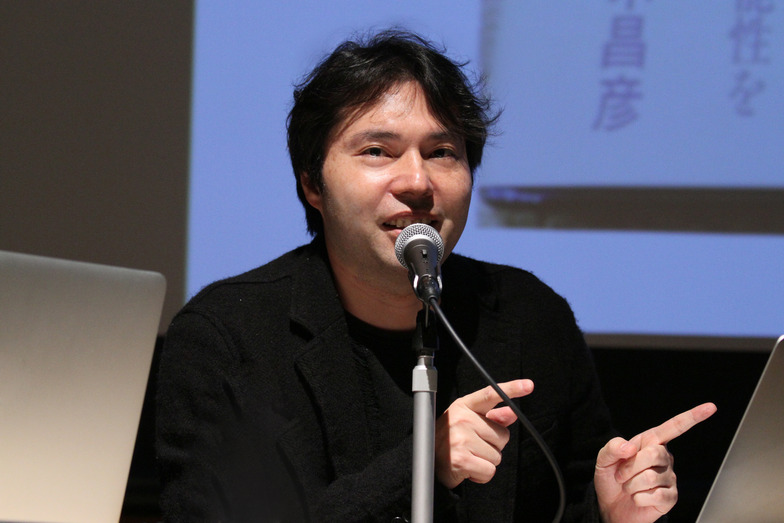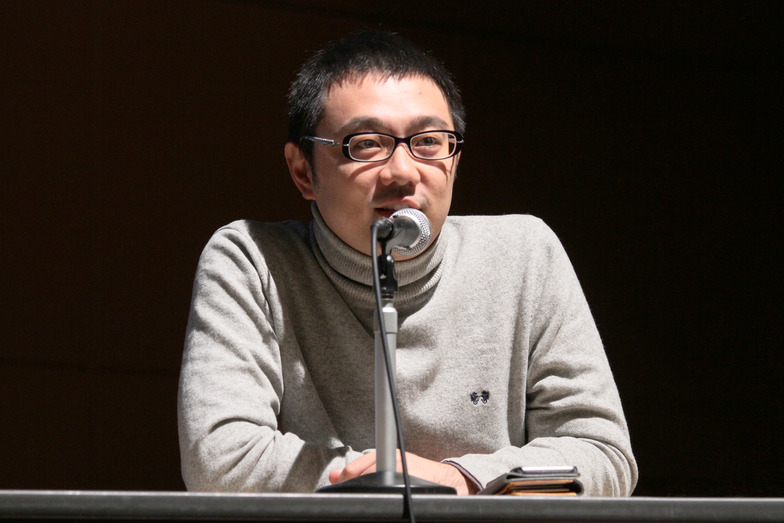Ken Suzuki is the co-founder of SmartNews, a news app based in Japan and the US. His book, "The Smooth Society and Its Enemies," explores the potential for ecological evolution of humans and society within the increasingly complex information society born after the internet. It has garnered significant attention alongside the rapid expansion and success of SmartNews. Suzuki, Kinya Tagawa of takram, and Yohei Sadoshima of Cork share overlapping interests in major themes like programming and art, content and new distribution channels, and business development processes, and have been in ongoing dialogue. The second part features a discussion among the three on their respective "definitions of content and how to create it."

(From left) Mr. Tagawa, Mr. Suzuki, Mr. Sadoshima
Physicality and operability
will become crucial factors for content
Sadoshima: Even though we all say "content," what each of us three imagines might be completely different. What kind of content do you two think is important, and how do you think content will change going forward?
Suzuki: Since "content" refers to the substance inside, it can only truly be called content once the container—the format—is defined. Right now, the boundary between content and container is blurred and unclear.
I think creators aren't just making the work itself; they're trying to evoke a certain feeling in the people who see or hear it. That's how I feel when I write books. The challenge today is what new sensations we can create there.
I want to liberate us from society's imposed sense of "You must see things this way." That's why we're exploring content and platform technologies, and design methods that transcend the "content-container" paradigm.
Tagawa: What I deal with are artifacts—tools and environments. Tools, especially, hold a particular charm in their proximity to human physicality, so your point resonates deeply.
One reason SmartNews took off was how well its horizontal tab interface aligned with smartphone usability. By consolidating interactions into just two motions—vertical and horizontal scrolling—it made diverse information emerge from simple, repetitive flicking. That created a sense of satisfaction. That flicking sensation shares similarities with turning pages in a newspaper or book, right? Such repetitive actions are said to calm people and induce a flow state of thought.
The functionality of news media and the physicality of fingertips. Where these two blend exquisitely lies the realm we must truly consider. To implement things in that realm, you need to understand technology. I think SmartNews symbolizes this very aspect of our current era.
Suzuki: That's a sharp observation. We were quite particular about the satisfying feel of the flick.
Tagawa: Achieving that flick response speed three years ago must have been incredibly difficult, right?
Suzuki: Apple provides the standard "page-turning" gesture. But we felt it lacked that satisfying feel, so we implemented our own version, adjusting the angle down to the nearest degree. It was tuning right at the limit.
Tagawa: What interests me now is what kind of media will emerge in 2020. I think it has to be technology-driven, but how will content be redefined? I believe it inevitably comes down to designing the point of contact between physicality and content.
Suzuki: They say virtual reality is coming. If that happens, sight and sound will be central, but you'll still want tactile feedback, right?
Tagawa: That tactile sense you mention falls into the realm of visual haptics. By linking visual input with our self-awareness of bodily movement, the brain misinterprets it as if we were actually touching something.
Of course, there's also the Oculus Rift, but imagine if the rendering power of an iPhone, currently running at 60 frames per second, could handle 10,000 frames per second. Even the same smartphone could become a completely different medium. I've heard it's already possible to reach around 1,000 frames per second.
Sadoshima: Last week in the US, I experienced Microsoft's HoloLens (a holographic computer that overlays 3D virtual objects onto your field of view). While enjoying a completely new level of fun and immersion, I immediately wondered, "Who will create this content, and how?"
News apps, too—I think creators have always focused on "how to gather good news." Hearing both of you speak, I realized it's revolutionary that this mindset is shifting to "the most important thing is making it so pleasantly intuitive you want to use it every day."
What each of them considers
What is the definition of good "content"?
Sadoshima: When creating things, what do you both consider "good content"?
Tagawa: Within a project, there are two defining moments of victory. The first is when the client's internal approvals pass, and the project is greenlit. The second is when that project wins in the market. Sometimes, focusing too much on winning the first battle leads to losing the second. Conversely, even an idea that seems likely to win the second battle won't materialize if it doesn't clear the first hurdle. We constantly weigh these two moments and make decisions with that balance in mind.
Personally, I believe it's crucial to move through the first win as swiftly as possible. In this fast-moving market, it's vital to establish decision-making mechanisms beforehand that reduce the need to heavily prioritize that initial internal victory. I dedicate time to creating an environment where we can continuously focus on achieving the second win.
Suzuki: At SmartNews, we frequently discuss what constitutes high-quality information. It generally boils down to these five categories:
① Information for survival. Accurate information about weather, disasters, and war.
② Information that changes how you see the world: Investigative reporting, opinion pieces, analytical articles, etc.
③ Information for work: News about economics, finance, life hacks, etc.
④ Information for daily life: Lifestyle, local news, transportation updates, etc.
⑤ Information for enjoyment: Entertainment, sports, culture, gourmet, etc.
I deliberately don't want to say which information has higher or lower value. Each is important and enriches life. Personally, I believe high-quality information is information that changes a person's life.
Sadoshima: The other day, I was talking with our company's certified public accountant, and they said, "It's important to make yourself look like a good writer." So what exactly is a "good writer"? Simply put, a good writer is one who sells well. However, in the manga world, there are writers whose tankōbon (collected volumes) sell well, and writers whose serialized magazine work drives magazine sales. The criteria for being a "valuable writer" can easily flip just because the medium shifts from magazine to tankōbon. I was thinking about what "good" means for our company, so I asked that question.
Finally, could you share your vision for the future?
Suzuki: Starting in 2016, we'll continuously release new features and rapidly evolve our product. We aim to make content accessible everywhere in the world, not just Japan and the US. When smartphones become ubiquitous globally, we want SmartNews to be trusted as the premier news app. Beyond that, our ultimate goal is to build a platform for democracy. Media alone can't change society, so we're committed to working with that broader vision in mind.
Tagawa: I want to firmly embed diversity within takram's organization. It's often said that diversity in talent sparks ideas and concepts, but I aim to ensure this diversity truly functions within our business development process. That's my major focus right now.
Today we discussed design engineering, but recently takram has also seen an increase in pure business planning and branding work. Communicating these new aspects as a company is something we see as the next step forward.
<End>
You can also read the interview here on AdTie!
Planning & Production: Aki Kanahara, Dentsu Inc. Event & Space Design Bureau









